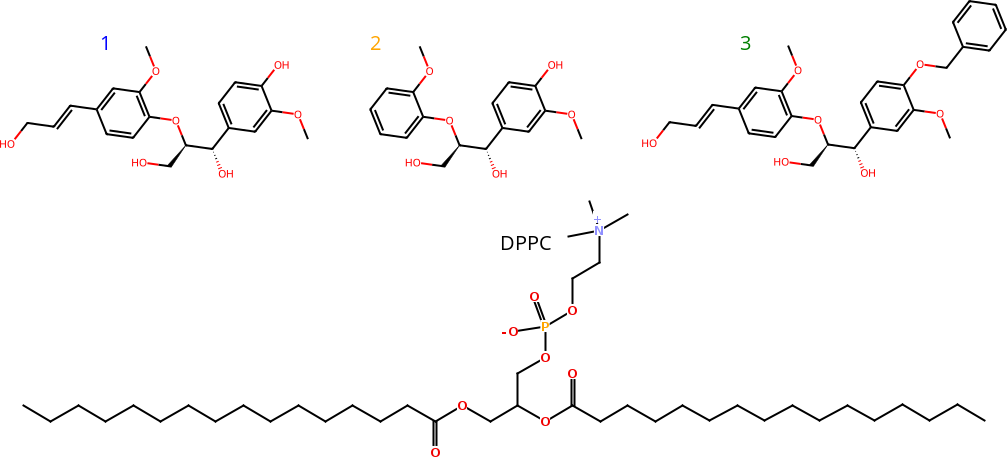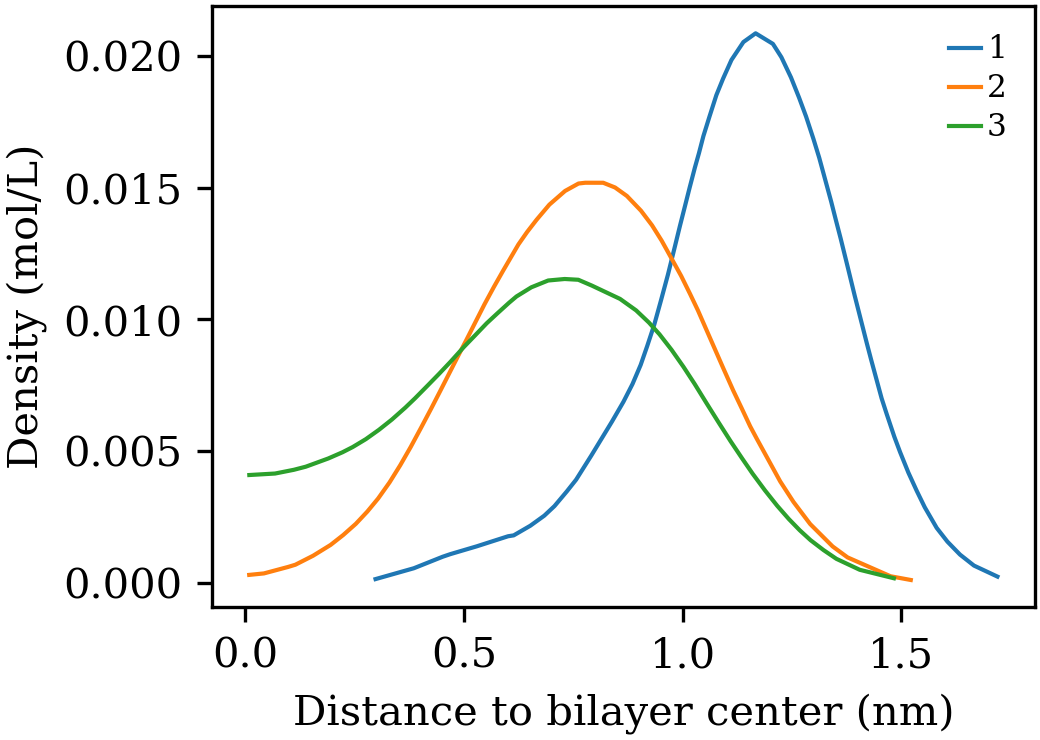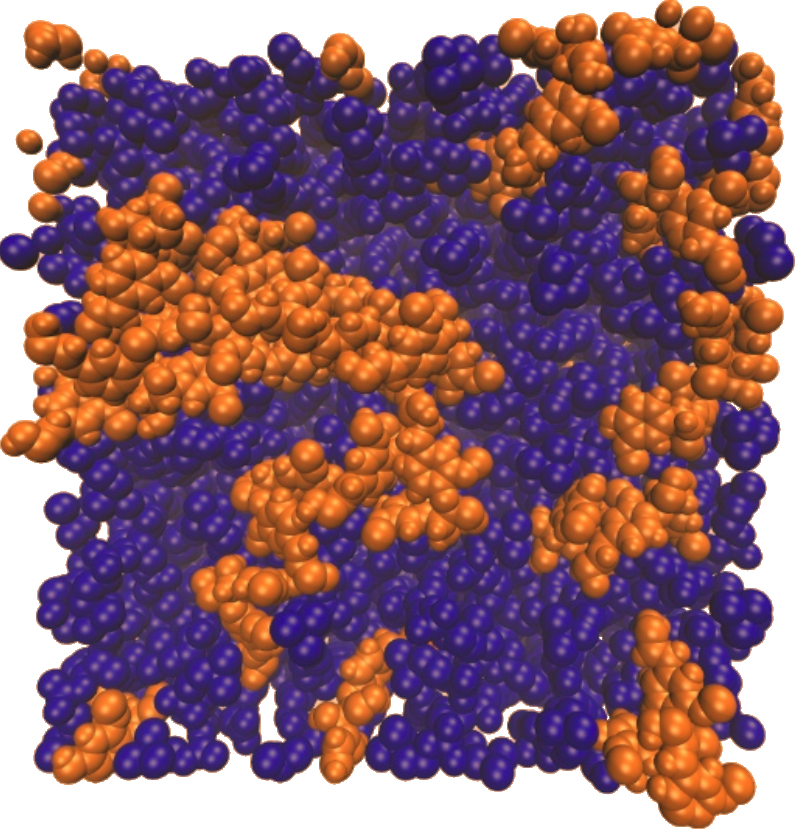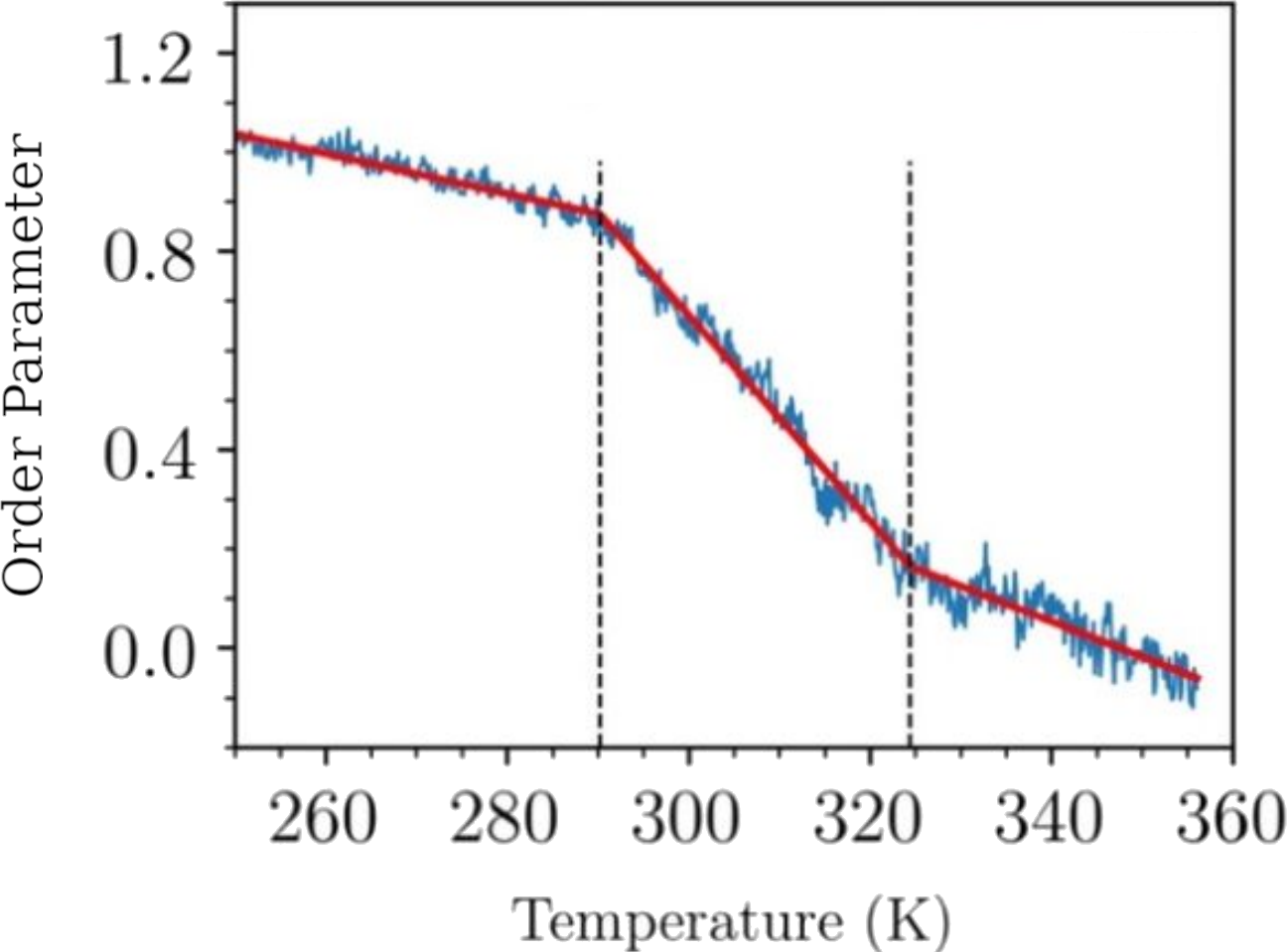Experimental and molecular dynamics simulation study of the effects of lignin dimers on the gel-to-fluid phase transition in DPPC bilayers
High-resolution differential scanning calorimetry (DSC) and molecular dynamics (MD) simulations were used to investigate the effect of three lignin dimer derivatives on the gel-to-fluid phase transition in DPPC lipid bilayers.

Figure 1: Chemical structures of lignin dimer derivatives (1-3) and DPPC lipid.
The DSC results showed that dimer 1 which is most like natural lignin associated less with the lipid bilayers than dimers 2 and 3 while MD simulations showed that dimer 1 interacted with the head groups of the lipids but did not penetrate deep into the interior of the bilayer.

Figure 2: Density profiles for the lignin dimers at the same overall concentrations as a function of their distances from the bilayer center along the bilayer normal direction. Dimer 1 is further from the bilayer center than dimers 2 and 3 on average. Dimer 3 has a significant concentration even at the bilayer center.

Figure 3: Top view of dimer 1 (orange) and lipid bilayer molecules (blue) which shows that there is a significant amount of the dimer on the surface of the bilayer interacting with the lipid head groups.
MD results also showed the same trends in lipid gel-to-fluid phase transition temperature shifts as the DSC results.

Figure 4: Example of averaged and normalized deuterium order parameter for lipid tails versus temperature used to estimate the range of temperatures for the gel to liquid crystalline phase transition from a simulation with linearly increasing temperature over time. The temperatures between the vertical dashed lines where the phase transition occurs are determined from a 3-piece linear fit (red lines).